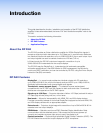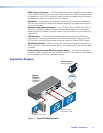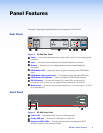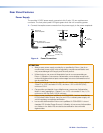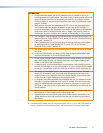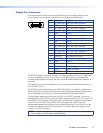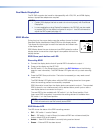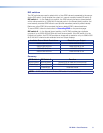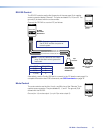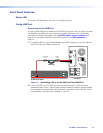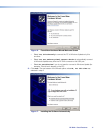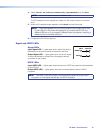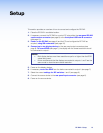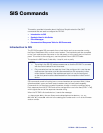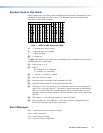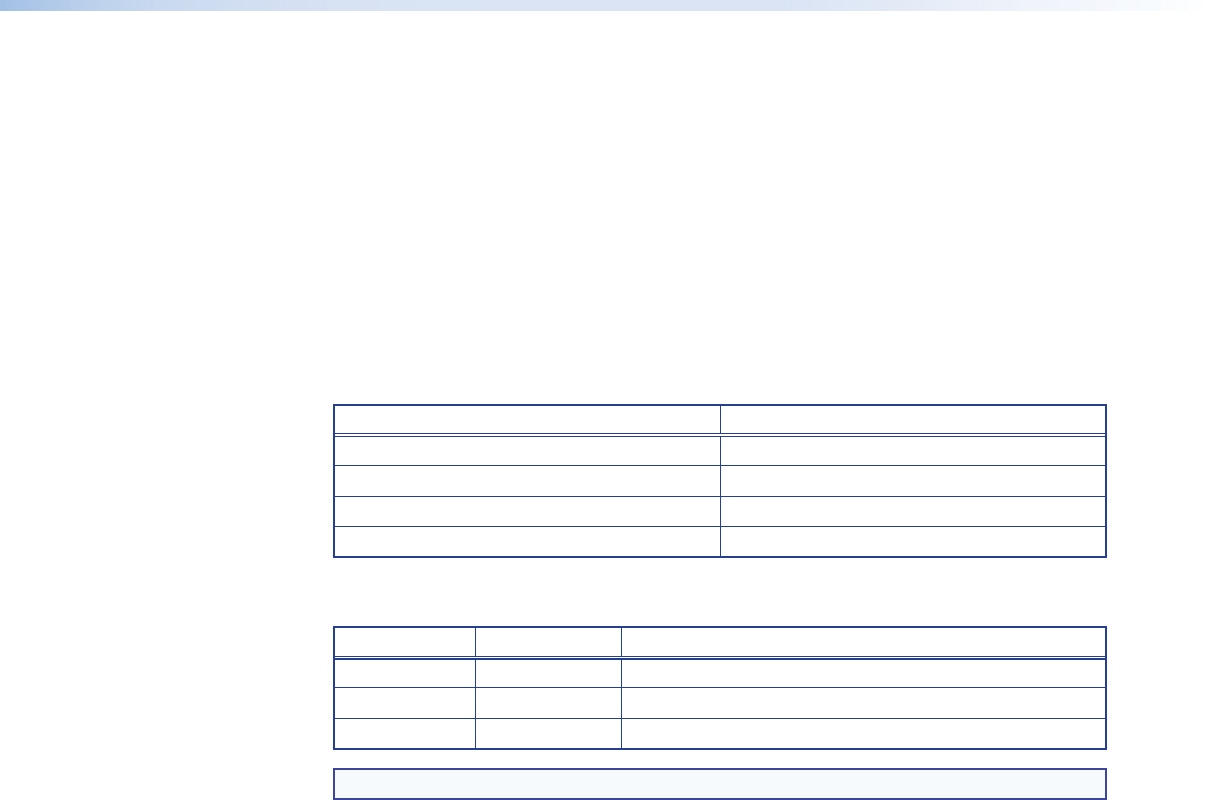
DIP switches
Two DIP switches are used to select which of two EDID values is presented to the source
device (DIP switch 1) and whether the output is in normal or extend mode (DIP switch 2).
DIP switch 1 — In the Default (up) position, the EDID value is the factory-stored default,
with a native resolution of 1080p and 2-channel audio. In the Stored (down) position, the
most recently recorded EDID value is used (this file overwrites previously stored values).
Before any other EDID file is recorded, the factory default EDID is also stored here.
To record EDID, follow the instructions in Recording EDID on the previous page.
DIP switch 2 — In the Normal (down) position, the DP DA2 provides two duplicate
outputs of up to 2560x1600 @ 60Hz and multi-channel audio. If the DIP switch is in the
Extend (up) position, the DPDA2 provides an image with a resolution of up to 3840x1080
@ 60 Hz and 2-channel audio extended over two output displays.
Available Extend Mode Resolutions Resolution per Output
3840x1080 @ 60 Hz 1920x1080 @ 60 Hz
3360x1050 @ 60 Hz 1680x1050 @ 60 Hz
2880x900 @ 60 Hz 1440x900 @ 60 Hz
2560x1024 @ 60 Hz 1280x1024 @ 60 Hz
Summary
DIP Switch 1 DIP Switch 2 Function
Stored (down) Normal (down) Stored EDID is used and normal mode
Default (up) Normal (down) Default EDID is used and normal mode
Extend (up) Extended mode
NOTE: If DIP switch 2 is set to Extend, DIP switch 1 is non-functional
DP DA2 • Panel Features 8




